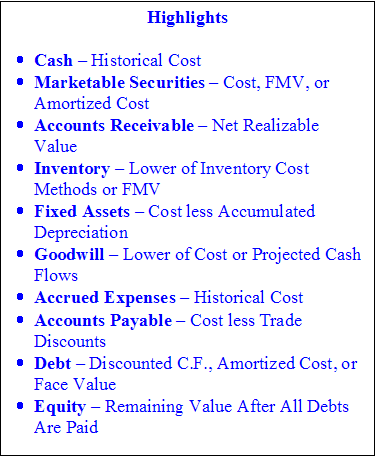Chestnut Cedar Stock Report The Elliot Wave Theory
Post on: 16 Март, 2015 No Comment

The Elliot Wave Theory
Fascination with the ocean has attracted people to the beaches for thousands of years. Even today, one of the best ways to relax and focus on one’s next strategic move is to walk along the seashore listening to the waves crash. Three hundred and thirty nine years before Elliott wrote The Wave Principle, William Shakespeare, in his play Julius Caesar, wrote about the importance of identifying trends in one’s life. Shakespeare’s now famous verse “there is a tide in the affairs of men, which, taken at the flood, leads on to fortune…” survived the test of time because it applies to many aspects of life, including the stock market. Recognizing and seizing opportunities when they present themselves, is a recipe for success in all areas of one’s life. Elliott, like Charles Dow before him, realized that the stock market, as well as life, moves in waves, and catching the right tide can lead to fortune.
It’s important to know a little about the man who wrote the theory. Ralph Elliott lived from 1871 to 1948. He was an accountant, who loved the ocean. Elliott, among other things, noticed the relationship between ocean waves and the stock market. He concluded that the ocean tides going “in and out” bore remarkable similarities to the stock market going “up and down”.
He called the primary waves that made up the tides “impulse waves”, with the smaller waves, the undertow, being “corrective waves’. He then quantified the waves into a 5-3 movement. The first five waves he identified as impulse waves, followed by 3 corrective waves. The eight wave cycle functioned consistently with the Fibonacci numbering sequence. Additionally, the 5-3 wave sequence could be broken down into sub-waves, all following the 5-3 movements. The sub-waves can be hard to identify and are infinite in number. Sub-waves can also extend the length of the impulse waves, further complicating one’s interpretation of a trend.
Elliott believed that human behavior, as well as the stock market, could mathematically predict the retracement percentages and multiples based on the Fibonacci ratio principles. The most important Fibonacci retracements are 38%, 50% and 62%, with inverse multiples of 2.6, 2, and 1.6 times. Elliot’s thinking was that all human activity was connected by repeating patterns, ratios and time. Overall, the wave theory encompasses the belief that the stock market acts in accordance with the upward and positive movement in life, progressing in the manner of “three steps forward and two back.”
The Fibonacci numbering sequence is interesting because the ratios derived from it are found repeatedly throughout nature. Fibonacci first discovered the sequence when he was solving a problem as to how fast rabbits could breed. The same ratio repeats in geometry, the solar system and even body proportions. The sequence starts with 1 and adds the number preceding 1 to calculate the number following 1. For example:
0, 1, 1, 2, 3, 5, 8, 13, 21, 34, 55, 89, 144, 233, 377, 610, 987, 1597 …
The retracement and multiple ratios are calculated as follows:
Retracement: 1597 / 987 = 62% Multiple: 1597 / 987 = 1.6x
Retracement: 1597 / 610 = 38% Multiple: 1597 / 610 = 2.6x
The values of 1 are also important retracement and multiple ratios:
Retracement: 1 / 2 = 50% Multiple: 2 / 1= 2x
Elliot’s wave theory, combined with Fibonacci’s numbering sequence, took a lot of creativity; a good percentage of the time it works.
The wave theory is better utilized to identify trends, rather then to predict future movements. That said, I believe Elliot was trying to make money in the market and, as such, was using the wave theory as a forward or projective tool. The wave theory is popular today because it helps predict the direction of the market. Where the market is or has been is secondary to where the market is going.
Below is the classic diagram of the Elliott Wave Theory:
From the above example 1, 3 & 5 are the impulse waves. While 2 & 4 are retracement waves, they are considered part of the overall action orientated impulse waves. There are also three corrective waves at the end of the main trend, represented in the above example as A, B, & C.
The waves are formed based on the emotional reaction to events. Described below are the rationale behind the waves in a bullish trend (the opposite reasoning would hold true in a bear market):
Wave 1 – This is the first impulse wave, where “scavenger’ investors see value and opportunity, and start to bid up the value of the stock. This is the beginning of new money entering the stock.

Wave 2 – This is a retracement wave, where profit taking occurs. Many of the “tired of waiting” investors, as well as those with losses, will exit the security. The wave 2 pullback should not decline below the starting price of wave 1.
Wave 3 – This is the longest of the impulse waves and where good news and positive earning are taking place. The company has fundamentally improved and investors realize it, and want to participate in the company’s success.
Wave 4 – This is another profit taking retracement. The rule is that the price decline in wave 4 should never go below the peak of wave 1. The disciplined fundamental investors will take profits in this phase.
Wave 5 – This is where emotions are driving the market, inflating prices well beyond the normal pricing benchmarks of a security. It was in this wave that many of the technology investors in 2000 wished they would have sold. What were people thinking when they priced AOL higher then Time Warner? However, Wave 5 is considered to be part of the natural rules of the universe. Humans have a habit of taking things to excess. Wanting to succeed and being a little greedy or piggish is all part of life. Wave 5 represents the extreme end of the market, where expectations exceed reality.
Wave A – This is the beginning of the corrective waves. Most investors initially view the pullback as normal profit taking, not realizing they are now in the beginning of the corrective stage of the market.
Wave B – This is where the foolhardy or overly optimistic investors enter the market. They push prices higher, hoping and wishing to see prices return to their previous heyday, only to be disappointed by the continuing slide in wave C.
Wave C- This is the realization wave, where investors know the past trend is over and the excessive run-up in stock prices needs to be brought in line with historical benchmark valuations. Some investors sell, causing prices to fall further, while others hold on, in anticipation of a new upward trend. This is the stage where companies write off their excess goodwill and similar transactions.
Elliott placed no time frame on the wave movements. He felt that waves have various cycle times, ranging from a few hundred years to a few minutes. He labeled the cycles as: Grand Supercycle, Supercycle, Cycle, Primary, Intermediate, Minor, Minute, Minuet, and Sub-Minuet.
The underlying premise of the wave theory is that for every action (wave) in the market, there is a reaction (correction). The wave theory nicely ties together some of the basic rules of the universe with the behavior of the stock market.














